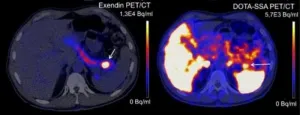(Press-News.org) Eight cities in the United States have implemented taxes on sugar-sweetened beverages, which contribute to health issues including obesity and Type 2 diabetes.
New research from the University of Washington investigated responses to sweetened beverage taxes using the purchasing behavior of approximately 400 households in Seattle, San Francisco, Oakland and Philadelphia – all of which recently introduced beverage taxes. The study was published online Sept. 30 in Health Economics.
Researchers found that after the tax was introduced, lower-income households decreased their purchases of sweetened beverages by nearly 50%, while higher-income households reduced purchases by 18%. Since previous studies have shown that lower-income individuals consume sweetened beverages at a higher-than-average rate, these results suggest the taxes could help reduce health disparities and promote population health.
“If households reduce their sugar intake, they will experience health benefits,” said Melissa Knox, co-author and UW associate teaching professor of economics. “Sweetened beverages are one of the largest sources of sugar in the American diet. They have all kinds of health consequences and don’t really provide any nutrition. The idea with the tax is that lower-income people, because they reduce their intake more, receive greater health benefits than the higher-income households.”
Using Nielsen Consumer Panel, researchers followed the households for a year before and after the tax was implemented in their city. Consumers were given a handheld scanner to report their purchases.
The results showed that households experienced price increases for taxed beverages, with the difference persisting for at least one year post-tax. Price increases were largest for lower-income households – a 22% increase in sweetened beverage prices versus 11% for higher-income households. After the tax was implemented, lower-income households saw a 47% decline in purchases of sweetened beverages. Researchers didn’t observe a post-tax increase in cross-border shopping.
“We also looked at untaxed beverages and found that lower-income households are substituting with untaxed beverages,” Knox said. “They’re using some of their money to go buy a different beverage, rather than buying a candy bar instead of buying a Coke.”
Policy makers are particularly interested in the response of lower-income consumers due to their higher consumption on average of sweetened beverages and concerns that the taxes are regressive.
Previous research from the UW found that lower-income and higher-income households paid about the same amount toward the tax, which means lower-income households spent a higher proportion of their income. But the study also showed more dollars went toward funding programs that benefit lower-income communities than those households paid in taxes. The annual net benefit to lower-income communities ranged from $5.3 million to $16.4 million per year across three U.S. cities.
More past research from the UW found the tax was also associated with declines in childhood body mass index among children in Seattle compared to a well-matched comparison group.
“Together, this body of work suggests the tax is having the intended health benefits and this new evidence gives reason to believe health benefits could be larger for households with lower incomes,” said Jessica Jones-Smith, co-author and UW professor of health systems and population health.
The research was funded by the UW’s Royalty Research Fund and the Robert Wood Johnson Foundation. Partial support was provided by a Eunice Kennedy Shriver National Institute of Child Health and Human Development research infrastructure grant.
For more information, contact Knox at knoxm@uw.edu and Jones-Smith at jjoness@uw.edu.
END
Sweetened beverage taxes decrease consumption in lower-income households by nearly 50%, UW study finds
2024-10-21
ELSE PRESS RELEASES FROM THIS DATE:
Black patients more likely to die after coronary bypass surgery
2024-10-21
PHILADELPHIA — Despite advances in cardiovascular medicine, Black patients are 22% more likely than white patients to die in the hospital after coronary artery bypass grafting (CABG) surgery, according to a study of more than 1 million patients presented at the ANESTHESIOLOGY® 2024 annual meeting.
“Our large study shows that disparities in cardiovascular health care delivery in the U.S. are ongoing, especially in Black patients,” said Vinicius Moreira, M.D., lead author of the study and chief anesthesiology resident at Advocate Illinois Masonic Medical Center, Chicago. “We found Black patients who have ...
The transformative power of film
2024-10-21
A new study has found that after watching a docudrama about the efforts to free a wrongly convicted prisoner on death row, people were more empathetic toward formerly incarcerated people and supportive of criminal justice reform.
The research, led by a team of Stanford psychologists, published Oct. 21 in Proceedings of the National Academy of Sciences (PNAS).
“One of the hardest things for groups of people who face stigma, including previously incarcerated people, is that other Americans don’t perceive ...
What happened when a meteorite the size of four Mount Everests hit Earth?
2024-10-21
Billions of years ago, long before anything resembling life as we know it existed, meteorites frequently pummeled the planet. One such space rock crashed down about 3.26 billion years ago, and even today, it’s revealing secrets about Earth’s past.
Nadja Drabon, an early-Earth geologist and assistant professor in the Department of Earth and Planetary Sciences, is insatiably curious about what our planet was like during ancient eons rife with meteoritic bombardment, when only single-celled bacteria and archaea reigned – and when it all started to change. When ...
Weather-changing El Niño oscillation is at least 250 million years old
2024-10-21
DURHAM, N.C. – The El Niño event, a huge blob of warm ocean water in the tropical Pacific Ocean that can change rainfall patterns around the globe, isn't just a modern phenomenon.
A new modeling study from a pair of Duke University researchers and their colleagues shows that the oscillation between El Niño and its cold counterpart, La Niña, was present at least 250 million years in the past, and was often of greater magnitude than the oscillations we see today.
These temperature swings were more intense in the past, and the oscillation occurred even when the continents were in different places than they are now, according to the study, which appears the week ...
Evolution in action: How ethnic Tibetan women thrive in thin oxygen at high altitudes
2024-10-21
Breathing thin air at extreme altitudes presents a significant challenge—there’s simply less oxygen with every lungful. Yet, for more than 10,000 years, Tibetan women living on the high Tibetan Plateau have not only survived but thrived in that environment.
A new study led by Cynthia Beall, Distinguished University Professor Emerita at Case Western Reserve University, answers some of those questions. The new research, recently published in the journal Proceedings of the National Academy of Sciences of the United States of America (PNAS), reveals how the Tibetan women’s physiological ...
Microbes drove methane growth between 2020 and 2022, not fossil fuels, study shows
2024-10-21
Microbes in the environment, not fossil fuels, have been driving the recent surge in methane emissions globally, according to a new, detailed analysis published Oct 28 in the Proceedings of the National Academy of Sciences by CU Boulder researchers and collaborators.
“Understanding where the methane is coming from helps us guide effective mitigation strategies,” said Sylvia Michel, a senior research assistant at the Institute of Arctic and Alpine Research(INSTAAR) and a doctoral student in the Department of Atmospheric and Oceanic Sciences at CU Boulder. “We need to know more about those emissions to ...
Re-engineered, blue light-activated immune cells penetrate and kill solid tumors
2024-10-21
HERSHEY, Pa. — Immunotherapies that mobilize a patient’s own immune system to fight cancer have become a treatment pillar. These therapies, including CAR T-cell therapy, have performed well in cancers like leukemias and lymphomas, but the results have been less promising in solid tumors.
A team led by researchers from the Penn State College of Medicine has re-engineered immune cells so that they can penetrate and kill solid tumors grown in the lab. They created a light-activated switch that controls protein function associated with cell ...
Rapidly increasing industrial activities in the Arctic
2024-10-21
The Arctic is threatened by strong climate change: the average temperature has risen by about 3°C since 1979 – almost four times faster than the global average. The region around the North Pole is home to some of the world’s most fragile ecosystems, and has experienced low anthropogenic disturbance for decades. Warming has increased the accessibility of land in the Arctic, encouraging industrial and urban development. Understanding where and what kind of human activities take place is key to ensuring sustainable development in the region – for both people and the environment. Until now, a comprehensive assessment of this part of the world has ...
Scan based on lizard saliva detects rare tumor
2024-10-21
A new PET scan reliably detects benign tumors in the pancreas, according to research led by Radboud university medical center. Current scans often fail to detect these insulinomas, even though they cause symptoms due to low blood sugar levels. Once the tumor is found, surgery is possible.
The pancreas contains cells that produce insulin, known as beta cells. Insulin is a hormone that helps the body absorb sugar from the blood and store it in places like muscle cells. This regulates blood sugar levels. In rare cases, the beta cells malfunction, resulting in a benign tumor called ...
Rare fossils of extinct elephant document the earliest known instance of butchery in India
2024-10-21
During the late middle Pleistocene, between 300 and 400 thousand years ago, at least three ancient elephant relatives died near a river in the Kashmir Valley of South Asia. Not long after, they were covered in sediment and preserved along with 87 stone tools made by the ancestors of modern humans.
The remains of these elephants were first discovered in 2000 near the town of Pampore, but the identity of the fossils, cause of death and evidence of human intervention remained unknown until now.
A team ...





